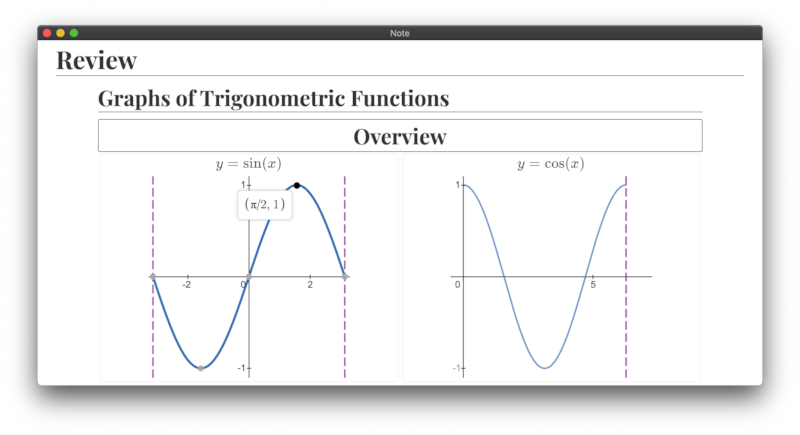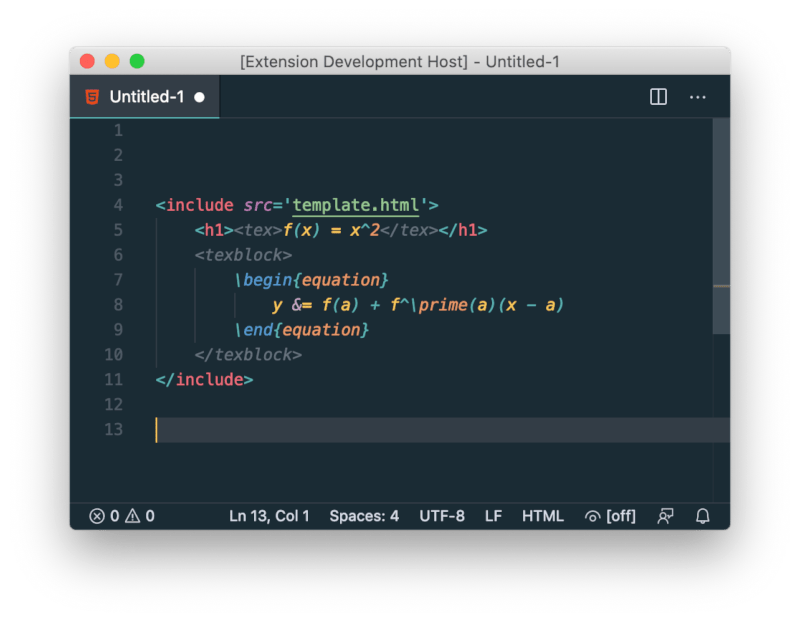| 0.1.1 |
|
|---|---|
| 0.1.0 |
|
#7 in #subscript
Used in 3 crates
26KB
633 lines
MOVED TO github.com/subscript-publishing/subscript
Subscript - Publishing using Web Technologies
Note, originally Subscript referred to a frontend UI framework, but that has been abandoned, I’m recycling the old Subscript name for a new project. The old project can be found here colbyn/subscript-old.

What is Subscript?
-
If you are a web developer:
- Subscript is a akin web application bundlers such as Parcel, but is -better suited- for mostly static content publishing. For those who say otherwise, see my old GitHub repository (colbyn/school-notes), using Parcel resulted in significant friction from a multitude of problems, notably being that Parcel and PostHTML do not interact very well, especially with nested
<include>resources and relative file paths.- For example, module A and B both include module C, where module C includes asset D. PostHTML processes
<include>files in a top-down manner, so therefore, after inlining module C in A and B -A and B now reference module asset D, using a file path relative to module C... You can imagine Parcel would then throw errors at this... Subscript by contract mostly works in a bottom-up manner, where module C is processed first, then modules A and B.
- For example, module A and B both include module C, where module C includes asset D. PostHTML processes
- Subscript is a akin web application bundlers such as Parcel, but is -better suited- for mostly static content publishing. For those who say otherwise, see my old GitHub repository (colbyn/school-notes), using Parcel resulted in significant friction from a multitude of problems, notably being that Parcel and PostHTML do not interact very well, especially with nested
-
If you are from academia:
-
Subscript is akin to LaTeX, both are markup languages for displaying content.
Furthermore both are geard towards STEM based content by default (unlike the Sile typesetter† that doen't support e.g. mathematical notation).
Yet Subscript is based on web technologies, and therefore can leverage the colossus ecosystem that makes up the web. For instance, need to display a graph of
y=x^2? Just use a macro that embeds Desmos, and therein simply write:<desmos height="200px"> <expr>y=x^2</expr> </desmos>Or, do you need to embed musical notation? Create a macro that embeds VexFlow.
Furthermore Subscript macros are more powerful than LaTeX, because Subscript macros can access the entire html tree, which is useful for e.g. the
<toc>macro that includes a generated table of contents at the given location.[†]: Regarding Sile and it's innovative layout system, since Subscript is based on web technologies, it can offer responsive grid layouts for different PDF resolutions.
-
High Level TODO:
- CSS Paged Media: support traditional print use cases, or just rendering to a PDF. This is what I am currently planning on using for rendering to e.g. PDFs: PagedJS
Example
FYI, you can compile the following with either
cargo run -- compile --root=example --input example/pages/**/*.html --output=example/output --trim pagesor,
subscript compile --root=example --input example/pages/**/*.html --output=example/output --trim pages
The following file from ./example/pages/index.html:
<include src="../template/base.html">
<h1>Hello World</h1>
<items>
<p>First Paragraph</p>
<p>Second Paragraph</p>
<li>Third Item</li>
</items>
</include>
Transforms to:
<html>
<head>
<title>Note</title>
</head>
<body>
<h1>Hello World</h1>
<ul>
<li>
<p>First Paragraph</p>
</li>
<li>
<p>Second Paragraph</p>
</li>
<li>Third Item</li>
</ul>
</body>
</html>
Math Preview

Comes with a syntax highlighting extension for VS Code.

It injects the LaTeX grammar from latex-workshop into the <tex> and <texblock> html tags.
Macros
For autocomplete in VS-Code, for now, use the custom data definitions in editors/vscode-html-macros.
Versatility in Subscript is made possible VIA macros (the syntax is akin to web components, but it's expanded out at compile time compared to runtime, i.e. a macro).
For example, to display math formulas, you may use the <tex> macro, to plot y = x^2, you may use e.g. the <desmos> macro, and etc. Furthermore, say you wanted to publish content with music notation, you could create a macro that provides a high level interface to e.g. VexFlow.
For now, all supported macros are implemented in the core compiler.
Long term wise, I'd like to move away from the current monolithic architecture, and support extensibility in a more general manner VIA some scripting language. For this, I plan on embedding Deno, which will provide a multitude of benefits that e.g. NodeJS can't offer (Deno is from the creator of NodeJS).
Dependencies
~9–12MB
~228K SLoC